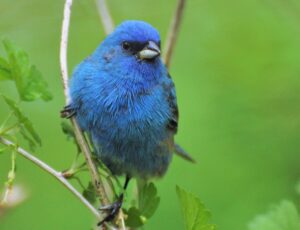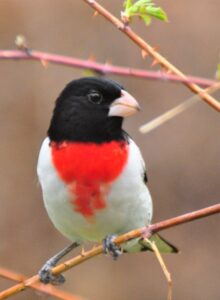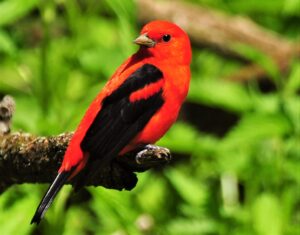Photography courtesy of Lowell Washburn, all rights reserved.
For Iowa birding enthusiasts, the month of May is a time like no other — the absolute high-water mark of the annual outdoor calendar. The reason is simple. After spending the winter months in food rich habitats in the Caribbean, Central America, and South America, millions of neotropical songbirds are making their way to northern nesting grounds.

It’s an epic migration. Many species – including some of the smallest — will travel thousands of miles between winter and summer habitats. For the most part, human eyes will not witness the annual spectacle. For the majority of these colorful migrants, the miracle of migration will take place in inky darkness as flocks employ starry constellations, magnetic fields and other, certainly more mysterious, factors to navigate the vastness of the night sky. At the approach of dawn, wing weary travelers descend to earth where they replenish spent reserves.

During the next few weeks, dozens of songbird species will stop in Iowa for food and rest. Although many will stay to nest and rear their young in our grasslands, greenbelts, and woodlands, millions more will continue to the coniferous boreal forests and subarctic tundras of northern Canada. But the Canadian summer is short. For northbound birdlife, there is little time for delay. Here Today, Gone Tomorrow is the migrants’credo. Those who wish to enjoy the show must strike while the metal is hot.
Plugging In: Iowa is blessed with a vast array of Birding Hotspots — more than you might imagine, in fact. Regardless of region, there federal, state, and county managed natural areas offering spectacular opportunities for birding as well as other outdoor recreational activities.
Some areas are small. Others are large. Three of my favorites include Stephen’s State Forest, the Yellow River Forest, and the rugged blufflands adjacent to the Mississippi River in extreme northeast Iowa. Each area offers its own version of the crème de le crème of spring birding. Although abundant, spring migrants can be as shy and secretive as they are colorful. Accurate identification can, at times, present a challenge – especially in dense foliage. Avoid frustration by tossing in your favorite Field Guide, binoculars and spotting scope.


 Tom Cope
Tom Cope Sue Wilkinson
Sue Wilkinson Susan Judkins Josten
Susan Judkins Josten Rudi Roeslein
Rudi Roeslein Elyssa McFarland
Elyssa McFarland Mark Langgin
Mark Langgin Adam Janke
Adam Janke Joe Henry
Joe Henry Kristin Ashenbrenner
Kristin Ashenbrenner Joe Wilkinson
Joe Wilkinson Dr. Tammy Mildenstein
Dr. Tammy Mildenstein Sean McMahon
Sean McMahon